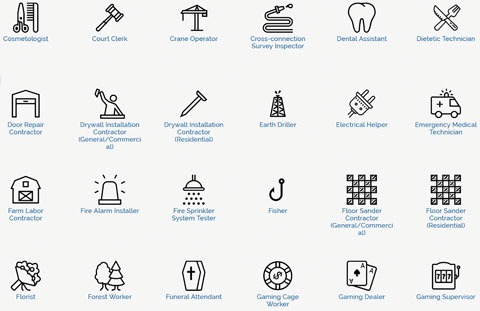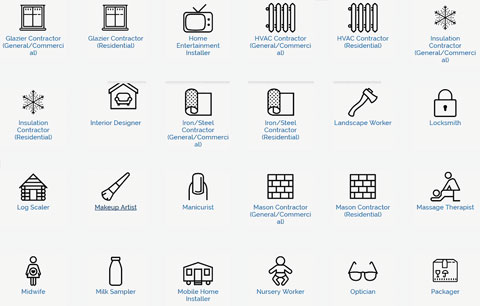![]() Institute for Justice
Institute for Justice
Every American deserves the opportunity to earn an honest living. Yet occupational licenses, which are permission slips from the government allowing someone to work, routinely stand in the way of honest enterprise. Without these licenses workers can face stiff fines or even risk jail time.
The arbitrary and excessive requirements for licensure, though, can be an enormous burden and often force entrepreneurs to waste their valuable time and money to pursue a license rather than actually working. These burdens too often have no connection at all to public health or safety. Instead, they are imposed simply to protect established businesses from economic competition.
For a growing number of Americans, gainful employment no longer requires convincing only a potential employer or customer of their value. It requires also convincing the government. This barrier to an honest living makes entrepreneurship more difficult in general. Furthermore, it can be an effective bar on entering many low income occupations for people with less access to financial capital or formal education.
These laws are wrong—economically, morally and constitutionally. Consumers and employers, not legislators and bureaucrats, should decide who succeeds in which jobs. To expand economic opportunity and vindicate the basic constitutional right to economic liberty, IJ is dedicated to rolling back these unnecessary and harmful restrictions.


An “occupational license” is, put simply, government permission to work in a particular field. To earn the license, an aspiring worker must clear various hurdles, such as earning a certain amount of education or training or passing an exam. In the 1950s, only one in 20 U.S. workers needed the government’s permission to pursue their chosen occupation. Today, that figure stands at almost one in three.
This study is the first to examine the scope of licensing laws for low and moderate income occupations across all 50 states and the District of Columbia, as well as the first to measure how burdensome those laws are for aspiring workers.
In documenting the license requirements for 102 occupations nationwide, this report finds that these laws can pose substantial barriers for those seeking work. These barriers affect particularly those most likely to aspire to these occupations—minorities, those of lesser means and those with less education. Moreover, about half the occupations studied offer the possibility of entrepreneurship, suggesting that these laws hinder both job attainment and creation.
Such inconsistencies give good reason to doubt that many licensing schemes are necessary. These inconsistencies may reflect, not the relative public health and safety risks of occupations, but instead the lobbying prowess of practitioners in securing laws to shut out competition.
State policymakers should review current and proposed licensure schemes to determine whether they truly serve the public or instead fence out competition. As millions of Americans struggle to find productive work, one of the quickest ways legislators could help would be to reduce or remove needless licensure burdens.



